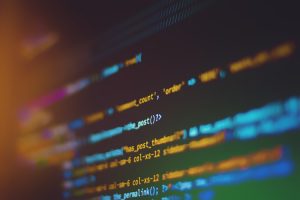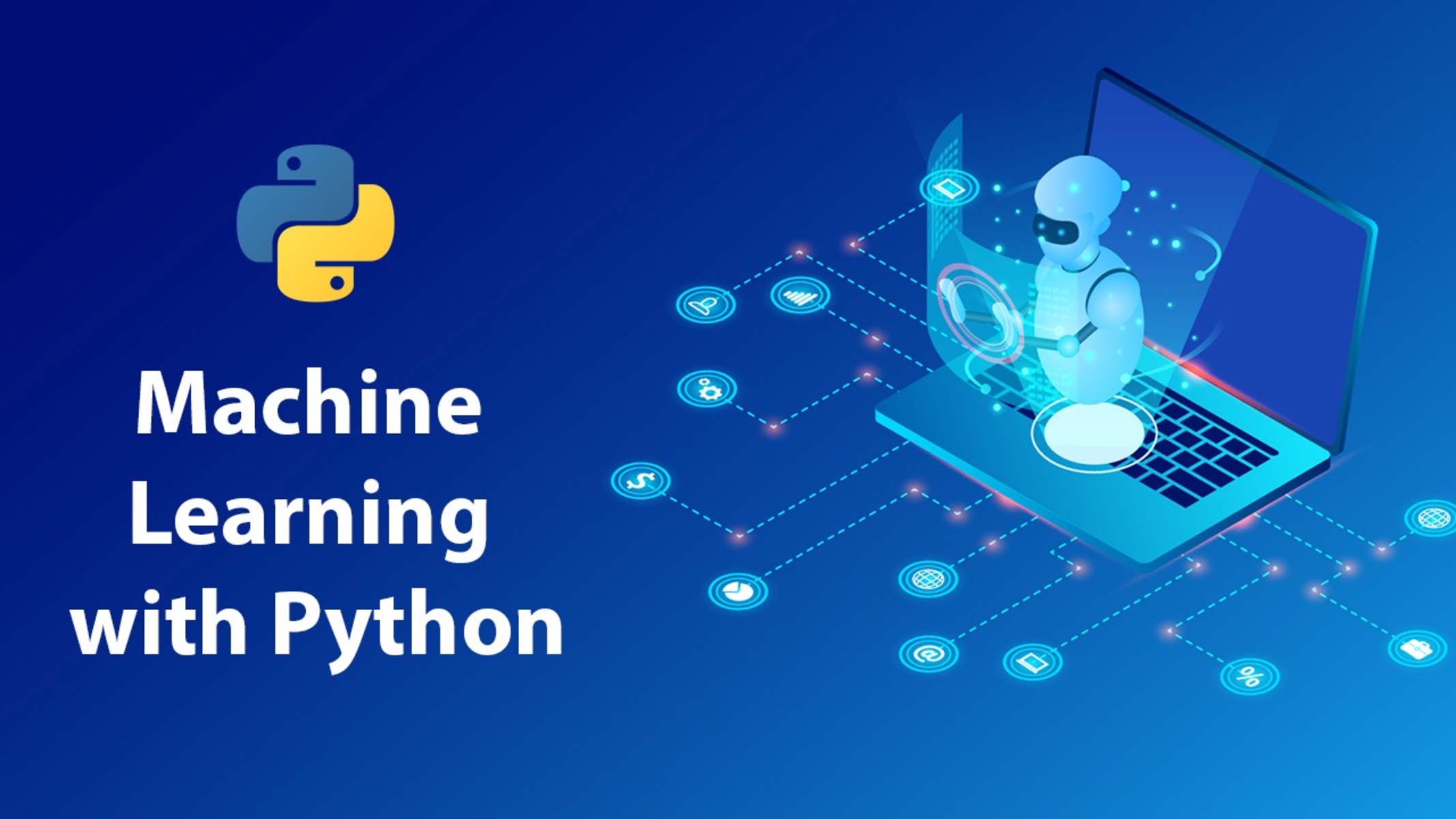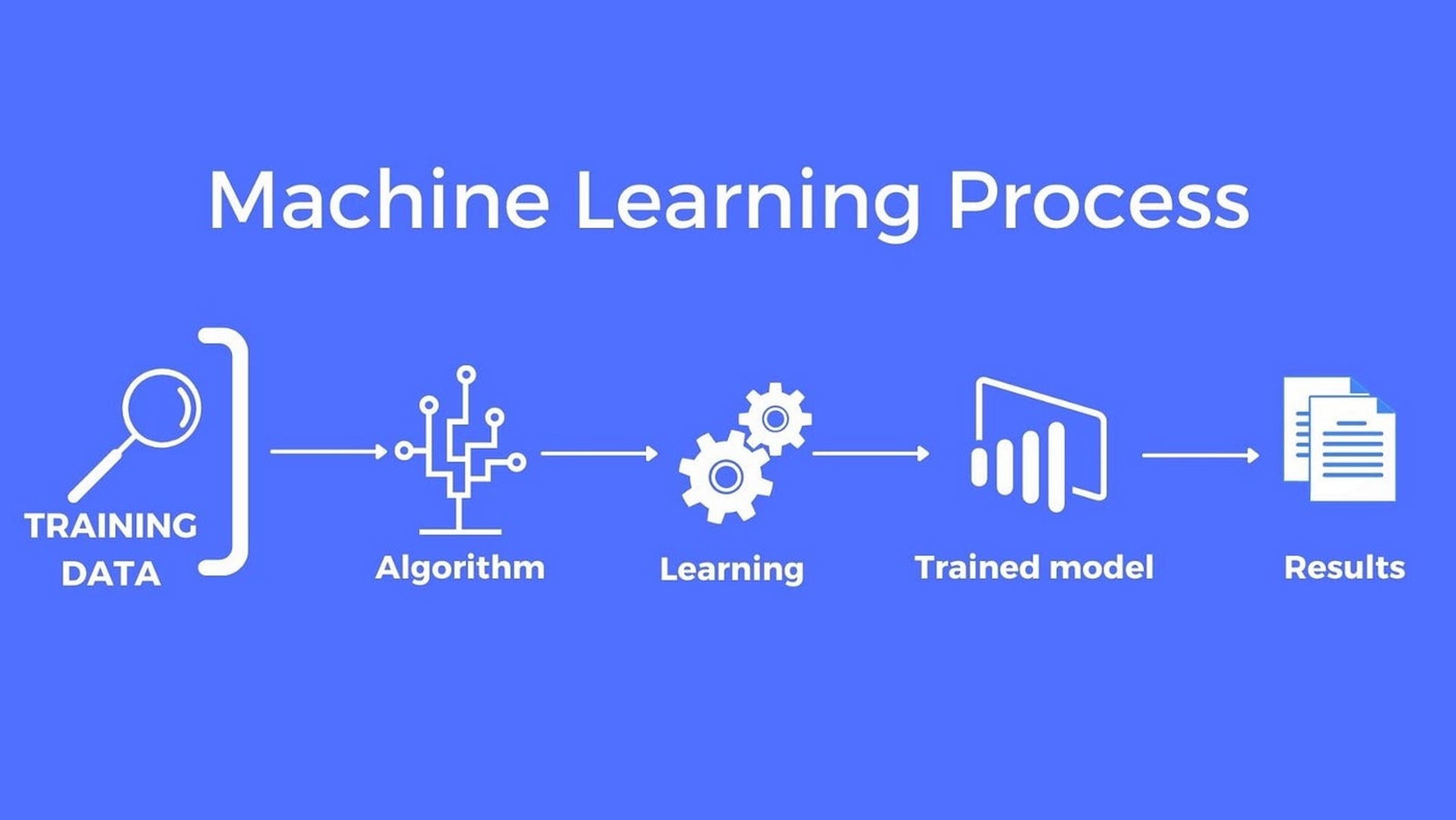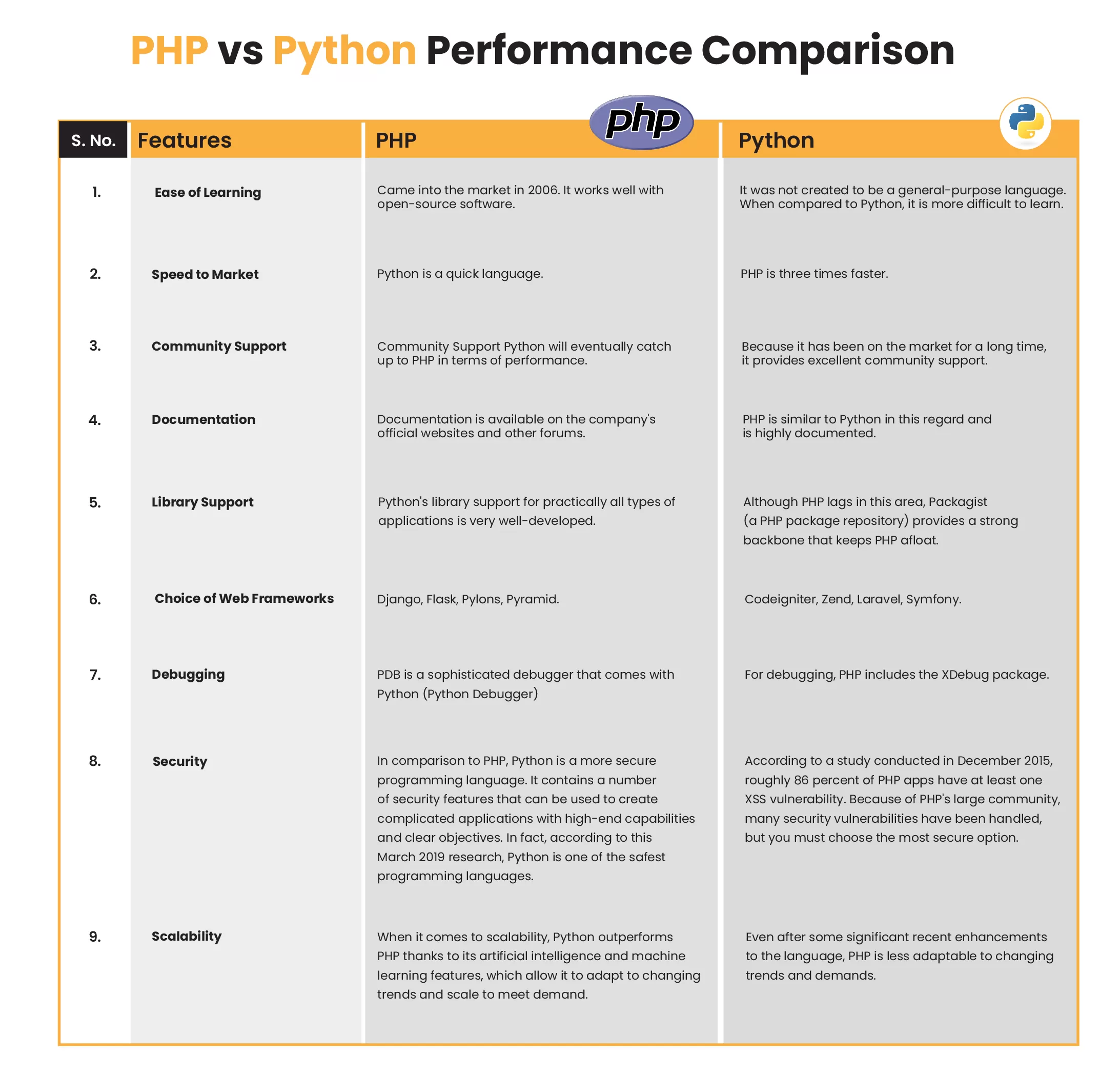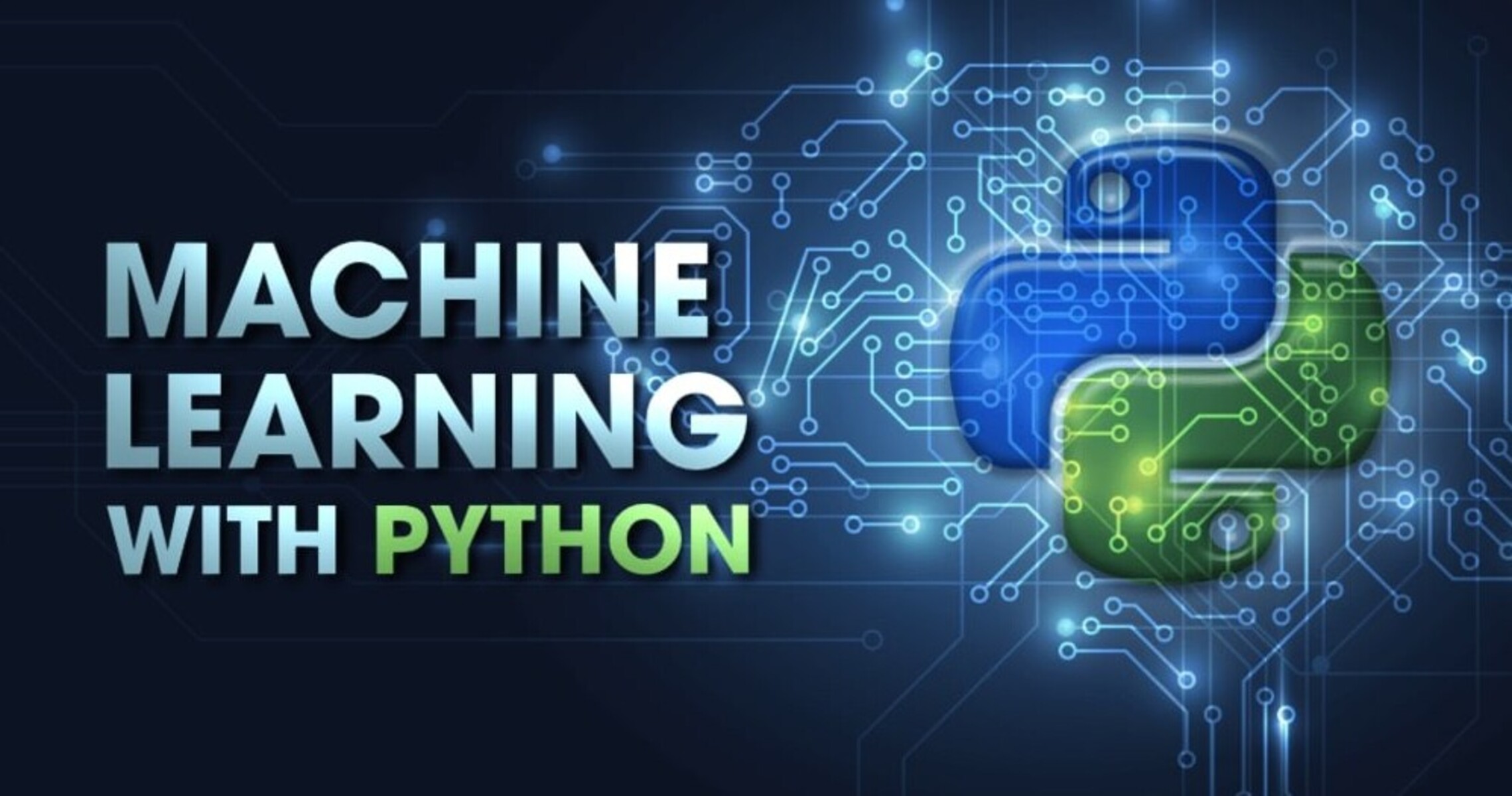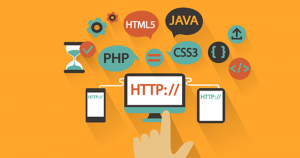Introduction
Machine learning has revolutionized the way we approach problem-solving, data analysis, and decision-making. It is a branch of artificial intelligence that focuses on enabling computers to learn from data and improve their performance over time. With the growing availability of data and computing power, machine learning has become increasingly powerful and accessible.
In this article, we will explore the use of machine learning in Python, one of the most popular programming languages for data analysis and modeling. Python provides a rich ecosystem of libraries and tools for machine learning, making it a top choice for professionals and beginners alike.
Whether you are a data scientist looking to build robust models, a developer interested in integrating machine learning capabilities into your applications, or simply curious about the field, this article will serve as a comprehensive guide to get you started.
We will begin by understanding the concept of machine learning and why it has gained so much traction in recent years. We will then delve into the advantages of using Python for machine learning and explore its vast array of libraries and frameworks.
After setting up your Python environment, we will walk through the essential steps of machine learning, including data loading and preparation, data exploration, model selection and training, evaluation, and prediction. Along the way, we will highlight key considerations and best practices to ensure successful and effective machine learning.
By the end of this article, you will have a solid understanding of how machine learning works, and will be equipped with the knowledge and tools to start your own machine learning projects using Python.
What is Machine Learning?
Machine learning is a subset of artificial intelligence that involves the development of algorithms and models that enable computers to learn from data and make predictions or decisions without being explicitly programmed. It is based on the idea that systems can automatically learn and improve from experience.
Traditional programming relies on explicit instructions to perform tasks, while machine learning is focused on training models to recognize patterns in data and make autonomous decisions based on those patterns. This allows machines to adapt and evolve as new data is introduced.
There are several key components that make up the process of machine learning:
1. Data: Machine learning algorithms require large amounts of data to learn patterns and make accurate predictions. This data can come in various forms, such as structured data in databases, unstructured data in text documents, or images and videos.
2. Features: Features are specific attributes or characteristics of the data that are used to make predictions. For example, in a model that predicts housing prices, features could include the number of bedrooms, the square footage, or the location of the house.
3. Model: A model is a mathematical representation of the relationships between the features and the target variable. It is trained using the available data and optimized to make accurate predictions.
4. Training: During the training phase, the model is fed with labeled data, meaning data that includes both the features and the corresponding target variable. The model learns from this labeled data to identify patterns and relationships.
5. Evaluation: Once the model is trained, it needs to be evaluated to assess its performance. This is typically done by measuring how well the model predicts the target variable on a set of data that it hasn’t seen during training.
6. Prediction: Once the model is deployed, it can be used to make predictions on new, unseen data. The model applies the learned patterns and relationships to the new data to generate predictions or make decisions.
Machine learning can be further classified into supervised learning, unsupervised learning, and reinforcement learning. In supervised learning, the model learns from labeled data, whereas in unsupervised learning, the model finds hidden patterns in unlabeled data. Reinforcement learning involves training a model through a system of rewards and punishments based on its actions.
With the advancements in technology and the increasing availability of data, machine learning has seen widespread adoption in various fields, including finance, healthcare, marketing, and more. It has the potential to automate manual tasks, improve decision-making processes, and uncover valuable insights from large and complex datasets.
Why Use Python for Machine Learning?
Python has emerged as one of the most popular programming languages for machine learning and data analysis. It offers a wide range of libraries and tools specifically designed for these tasks, making it an ideal choice for both beginners and experienced professionals. Here are some reasons why Python is widely used for machine learning:
1. Simplicity and Readability: Python has a clean and intuitive syntax that is easy to read and understand. It allows developers to write code in a clear and concise manner, facilitating quicker development and reduced debugging time.
2. Vast Ecosystem of Libraries: Python provides a comprehensive and robust ecosystem of libraries and frameworks for machine learning. The most popular library is scikit-learn, which encompasses a wide range of algorithms and tools for data preprocessing, feature selection, model training, and evaluation. Other libraries like TensorFlow and PyTorch enable deep learning and neural network implementations.
3. Active Community Support: Python has a large and active community of developers, data scientists, and researchers, who contribute to the development and improvement of machine learning libraries. This community support ensures that the libraries are constantly updated, bug-free, and well-documented.
4. Integration and Compatibility: Python integrates seamlessly with other programming languages like C/C++ and Java, allowing developers to leverage existing code and libraries. It also provides compatibility with popular data formats like CSV, JSON, and SQL, making it easy to load and manipulate data from various sources.
5. Flexibility and Scalability: Python is a versatile language that allows developers to work with different machine learning frameworks, experiment with various algorithms, and adapt to specific project requirements. It can handle both small-scale and large-scale projects, making it suitable for both research and production environments.
6. Easy Visualization: Python offers a variety of visualization libraries, such as Matplotlib and Seaborn, which allow for easy creation of graphs, charts, and plots. These libraries enable data scientists to gain insights from data and communicate findings effectively.
Overall, Python’s simplicity, extensive libraries, community support, and compatibility make it an excellent choice for machine learning. Whether you are a beginner or an experienced practitioner, Python provides a solid foundation and the necessary tools to implement and deploy machine learning models efficiently.
Getting Started with Machine Learning in Python
Now that we understand the basics of machine learning and the advantages of using Python, let’s explore how to get started with machine learning in Python. Follow these steps to kickstart your journey:
1. Set Up Your Python Environment: Start by installing Python on your system. Visit the official Python website and download the latest version suitable for your operating system. Once installed, you can verify the installation by running the command “python –version” in your command prompt or terminal.
2. Install and Import Libraries: Python offers a multitude of libraries specifically designed for machine learning. Some essential libraries include NumPy for numerical computing, Pandas for data manipulation, and scikit-learn for machine learning algorithms. To install these libraries, you can use the package manager “pip” by running commands like “pip install numpy” or “pip install scikit-learn”. Import the necessary libraries in your Python script using the “import” statement.
3. Load and Prepare Data: To train your machine learning models, you need to load and prepare your data. Python provides various libraries like Pandas and NumPy to read and manipulate data. You can import your data from CSV files, text files, databases, or other sources, and then preprocess it by handling missing values, scaling features, and encoding categorical variables.
4. Explore and Visualize Data: It is essential to understand your data before applying machine learning algorithms. Python offers libraries like Matplotlib and Seaborn to visualize your data through plots, histograms, scatter plots, and more. Exploratory data analysis helps identify patterns, outliers, and relationships that can guide the choice of machine learning algorithms.
5. Choose and Train a Machine Learning Model: Python’s scikit-learn library provides a wide range of machine learning algorithms, including decision trees, random forests, support vector machines, and neural networks. Based on your problem type and data characteristics, select an appropriate algorithm and train your model using the training data. Adjust the model’s hyperparameters to optimize its performance.
6. Evaluate and Fine-tune Your Model: Once the model is trained, evaluate its performance using validation data or cross-validation techniques. Assess metrics like accuracy, precision, recall, and F1 score to gauge how well the model is performing. Fine-tune the model by adjusting hyperparameters, feature selection, or exploring ensemble techniques to improve its accuracy or generalizability.
7. Make Predictions: After the model is optimized, it is ready to make predictions on new, unseen data. Use the testing data to evaluate the model’s performance on unseen instances. Apply the trained model to new data to generate predictions or make decisions.
This is just a brief overview of the steps involved in getting started with machine learning in Python. As you dive deeper into the field, you will encounter more advanced concepts and techniques to enhance your models’ performance and tackle more complex problems.
Setting Up Your Python Environment
Before diving into machine learning in Python, it’s essential to set up your Python environment properly. Here are the key steps to get started:
1. Install Python: Visit the official Python website at python.org and download the latest version of Python recommended for your operating system. Both Python 2 and Python 3 are available, but it’s recommended to use the latest stable version of Python 3 for compatibility and security reasons.
2. Verify Python Installation: Once Python is installed, you can verify the installation by opening a command prompt or terminal and running the command “python –version“. This will display the installed Python version. Additionally, you can execute “python” to enter the Python interactive shell, where you can write and run Python code.
3. Choose an Integrated Development Environment (IDE): An IDE provides a user-friendly environment to write, edit, and run Python code. There are several popular options available, including PyCharm, Visual Studio Code (VS Code), and Jupyter Notebook. Choose an IDE that suits your workflow and preferences. IDEs often come with built-in features for code formatting, debugging, and package management, which make them highly useful for working on machine learning projects.
4. Install Package Manager: Python package managers, such as pip or conda, make it easy to install and manage external libraries and dependencies. By default, Python comes with pip, which allows you to install libraries from the Python Package Index (PyPI). To check if pip is installed, run “pip –version“. If it’s not installed, follow the instructions on the pip website to install it.
5. Create and Activate a Virtual Environment: It’s considered best practice to create a virtual environment for each Python project to manage dependencies and avoid conflicts between different projects. To create a virtual environment, open a command prompt or terminal and run “python -m venv myenv” (replace “myenv” with the desired name of your virtual environment). To activate it, run “source myenv/bin/activate” on Unix-based systems or “myenv\Scripts\activate” on Windows.
6. Install Required Libraries: Once your virtual environment is activated, you can use pip to install the necessary libraries for your machine learning project. For example, you can run “pip install numpy” to install the NumPy library for numerical computing or “pip install scikit-learn” to install the scikit-learn library for various machine learning algorithms. Make sure to refer to the documentation of the specific libraries you need for installation instructions and dependencies.
7. Set Up Jupyter Notebook (Optional): If you prefer an interactive and notebook-style environment for prototyping and experimenting with your machine learning code, you can install Jupyter Notebook using pip (“pip install jupyter“). Running “jupyter notebook” in your command prompt or terminal will launch the Jupyter Notebook interface in your web browser, where you can create and run Python notebooks.
By following these steps, you will have a fully functional and customized Python environment ready for machine learning. Remember to keep your environment updated by periodically checking for new Python releases and library updates to ensure compatibility and take advantage of the latest features and enhancements.
Installing and Importing Libraries
Python provides a vast ecosystem of libraries and packages that greatly facilitate machine learning tasks. In this section, we will discuss how to install and import libraries in Python to make use of their functionality:
1. Installing Libraries: Python libraries can be installed using the package manager pip. Open a command prompt or terminal and use the command “pip install library_name“, replacing “library_name” with the desired library you want to install. For example, to install NumPy, run “pip install numpy“. Ensure that you have an active internet connection to download and install the library from the Python Package Index (PyPI).
2. Importing Libraries: Once a library is installed, you can import it into your Python script or notebook using the import statement. For example, to import NumPy, use the following code:
python
import numpy as np
This statement imports the NumPy library and assigns it the alias “np”. You can now access the functions and objects provided by NumPy using the “np” prefix. Make sure to use the correct alias while importing to avoid any naming conflicts with other libraries or variables in your code.
3. Importing Specific Modules or Functions: In some cases, you may only need to import specific modules or functions from a library rather than the entire library. To do this, you can use the from keyword followed by the library name, the import keyword, and the specific module or function name. For example:
python
from sklearn.preprocessing import StandardScaler
This statement imports the StandardScaler class from the preprocessing module of the sklearn library. Now, you can directly use StandardScaler in your code without the need for the library prefix.
4. Confirming Successful Installation: To ensure that a library is correctly installed and accessible, you can check for any import errors. If you encounter an import error, it might indicate that the library is not installed or has not been installed properly. Refer to the library’s documentation for specific installation instructions and troubleshooting tips.
Remember, it is good practice to install and import only the libraries that are necessary for your project to keep your code clean and avoid unnecessary dependencies. Additionally, keep your libraries up to date by regularly checking for new releases and updates, as they often introduce bug fixes, performance enhancements, and new features.
Loading and Preparing Data
One of the crucial steps in any machine learning project is loading and preparing the data for analysis and model training. In this section, we will explore the process of loading and preparing data in Python:
1. Loading Data: Python offers various libraries and functions to load data from different sources. You can use the pandas library to load data from CSV files, Excel files, or databases. The read_csv() function in pandas allows you to read data from a CSV file into a DataFrame, which is a popular data structure that provides powerful data manipulation capabilities.
2. Inspecting Data: Once the data is loaded, it’s essential to inspect and understand its structure. Use methods like head() to examine the first few rows of the DataFrame, info() to get an overview of the column data types and missing values, and describe() to view statistical summaries of the numeric columns.
3. Handling Missing Values: It’s common for real-world datasets to have missing values. It’s important to handle these missing values appropriately before proceeding with the analysis or training the model. You can use methods like isnull() to identify missing values, and then choose to remove or impute them using techniques such as mean imputation or interpolation.
4. Encoding Categorical Variables: Many machine learning algorithms require numerical input. If your data contains categorical variables, you need to convert them into a numerical representation. You can use techniques like label encoding or one-hot encoding depending on the nature of the categorical variables. The scikit-learn library provides various encoding techniques through its preprocessing module.
5. Splitting Data: To evaluate the performance of your machine learning model, it’s crucial to split the data into separate training and testing datasets. The training dataset is used to train the model, while the testing dataset is used to assess its performance on unseen data. The train_test_split() function in scikit-learn enables you to split the data with customizable ratios.
6. Scaling Data: When your data features have different scales, it is essential to normalize or standardize them to ensure fair comparisons during model training. The StandardScaler in scikit-learn can be used to standardize the numerical features by subtracting the mean and dividing by the standard deviation.
7. Handling Imbalanced Classes: In classification problems, it’s common to encounter imbalanced class distribution, where one class has significantly more instances than the others. This can lead to biased models. Techniques such as oversampling or undersampling can be used to address the class imbalance and improve model performance.
These are some of the key steps involved in loading and preparing data for machine learning in Python. Remember to thoroughly understand your data, handle missing values appropriately, encode categorical variables, split the data into training and testing sets, and normalize or standardize numerical features. Proper preparation of the data is critical to ensure accurate and reliable model training and evaluation.
Exploring and Visualizing Data
Exploring and visualizing data is a crucial step in any data analysis or machine learning project. It allows us to gain insights, understand patterns, identify outliers, and make informed decisions. In this section, we will explore the process of exploring and visualizing data in Python:
1. Descriptive Statistics: Start by calculating descriptive statistics of your data to understand its overall characteristics. Use functions like mean(), median(), min(), max(), and std() to calculate the central tendency, dispersion, and range of your data.
2. Data Visualization: Python offers a range of libraries, such as Matplotlib and Seaborn, to create various types of charts and plots. Visualizations help us understand the distribution, relationships, and trends in the data. Common plot types include histograms, box plots, scatter plots, line plots, bar plots, and heatmaps.
3. Histograms: Histograms are useful for visualizing the distribution of numeric data. They display the frequency or count of data points within certain intervals or bins. Histograms provide insights into the skewness, peaks, and spread of the data.
4. Box Plots: Box plots, also known as box-and-whisker plots, provide a visual summary of the data’s five-number summary: minimum, first quartile, median, third quartile, and maximum. They display the central tendency, spread, and, if applicable, the presence of outliers.
5. Scatter Plots: Scatter plots are useful for exploring the relationship between two numeric variables. They help us understand the correlation, patterns, and outliers in the data. Points on the plot represent individual data points, and the distribution can be visualized using colors, sizes, or shapes.
6. Line Plots: Line plots are commonly used to display trends or patterns over time or any sequential order. They are useful for visualizing time series data or plotting different variables against an independent variable.
7. Bar Plots: Bar plots are suitable for comparing categorical variables or displaying frequencies or counts. They can be used to show the distribution of a variable across different categories or to compare values between different groups.
8. Heatmaps: Heatmaps are effective for visualizing the correlation between multiple variables. They use color gradients to represent the strength and direction of the relationships between variables. Heatmaps help identify patterns or clusters within the data.
These are just a few examples of data visualizations in Python. Remember to choose the appropriate plot types based on the data types and research questions you want to address. Visualization is an iterative process, and it’s essential to experiment with different plots to gain a comprehensive understanding of your data.
Choosing and Training a Machine Learning Model
Choosing the right machine learning model is a critical step in the machine learning workflow. The selection depends on the nature of the problem, the available data, and the desired outcome. In this section, we will explore the process of choosing and training a machine learning model in Python:
1. Understanding the Problem: Start by thoroughly understanding the problem you want to solve. Determine whether it’s a classification, regression, clustering, or other types of problem. Consider the characteristics of the data, such as the number of features, presence of categorical variables, and the size of the dataset.
2. Exploring Different Algorithms: Python provides a vast array of machine learning algorithms through libraries like scikit-learn, TensorFlow, and PyTorch. Each algorithm has its strengths, limitations, and assumptions. Read the documentation and explore the different algorithm options to find the most suitable ones for your problem.
3. Assessing Algorithm Suitability: Consider various factors when assessing the suitability of an algorithm. Look for algorithms that have been successful in similar problem domains. Evaluate their scalability, interpretability, and computational requirements. Take into account the need for model explainability and whether the algorithm provides it.
4. Preprocessing and Feature Engineering: Before training a model, ensure that your data is properly preprocessed and features are appropriately engineered. Use techniques such as scaling, normalization, one-hot encoding, handling missing values, and feature selection. The scikit-learn library provides a comprehensive set of functions and transformers for these preprocessing tasks.
5. Model Training: Split your preprocessed data into training and testing sets. Use the training set to fit the model to your data. The process involves setting the hyperparameters, learning the patterns and relationships in the data, and optimizing the model’s internal parameters to minimize the error or loss.
6. Evaluating Model Performance: After training, evaluate the model’s performance on the testing set. Common evaluation metrics include accuracy, precision, recall, F1 score, and the area under the receiver operating characteristic (ROC) curve. Consider a variety of metrics to gain a comprehensive understanding of your model’s strengths and weaknesses.
7. Model Fine-tuning: If the model’s performance is not satisfactory, consider fine-tuning the hyperparameters or exploring different algorithm configurations. Techniques like grid search, random search, or Bayesian optimization can be used to find the optimal combination of hyperparameters.
8. Cross-Validation: To obtain a more reliable estimate of the model’s performance, use cross-validation techniques like k-fold cross-validation. This involves dividing the data into multiple folds and training and testing the model on different combinations of folds. Compute the average performance across these folds to get a robust estimation.
9. Model Deployment: Once your model is trained and evaluated, it’s ready to be deployed and used for making predictions on new, unseen data. Implement the necessary code to feed new data into your model and extract the predictions or decisions.
Remember that the choice of the machine learning model can have a significant impact on the success of your project. Prioritize understanding the problem, exploring different algorithms, and evaluating and fine-tuning the models to achieve the best possible results.
Evaluating and Fine-tuning Your Model
Once you have trained a machine learning model, it is essential to evaluate its performance and fine-tune it to optimize its results. In this section, we will discuss the process of evaluating and fine-tuning your model in Python:
1. Evaluating Model Performance: Start by evaluating your model’s performance using appropriate metrics. The choice of metrics depends on the type of problem you are working on. For classification tasks, metrics like accuracy, precision, recall, F1 score, and area under the ROC curve are commonly used. For regression tasks, metrics like mean squared error (MSE) and R-squared are often used. The scikit-learn library provides functions to compute these metrics.
2. Confusion Matrix: A confusion matrix is a useful visual representation of your model’s performance in a classification task. It shows the number of true positives, true negatives, false positives, and false negatives. This matrix helps in understanding the accuracy and misclassification of your model and is particularly useful when dealing with imbalanced datasets.
3. Cross-Validation: To obtain a more robust estimate of your model’s performance, use cross-validation techniques like k-fold cross-validation. This involves dividing your data into k folds and training and evaluating the model on different combinations of these folds. It helps to minimize bias and provides a more reliable estimate of your model’s effectiveness.
4. Overfitting and Underfitting: Overfitting occurs when a model performs excellently on the training data but fails to generalize well to unseen data. Underfitting, on the other hand, occurs when a model is too simple to capture the underlying patterns in the data. Use techniques like k-fold cross-validation and learning curves to identify and mitigate overfitting or underfitting issues.
5. Hyperparameter Tuning: Hyperparameters are parameters that are not learned by the model but are set by the user before training. Fine-tuning these hyperparameters can significantly improve the model’s performance. Techniques like grid search, random search, and Bayesian optimization can help find the best combination of hyperparameters.
6. Model Selection: In some cases, you may need to evaluate and compare multiple models to choose the best one for your task. Consider the performance metrics, computational requirements, interpretability, and other specific requirements of your problem when making this decision.
7. Ensemble Techniques: Ensemble techniques combine the predictions of multiple models to improve overall performance. Techniques like bagging (e.g., random forests), boosting (e.g., AdaBoost, XGBoost), and stacking can be used to create powerful ensemble models.
8. Iterative Improvement: Building a successful machine learning model often requires an iterative process of evaluating, fine-tuning, and making improvements. Continuously analyze the model’s performance, explore different approaches, and iterate on the evaluation and fine-tuning steps until you achieve the desired results.
Remember, evaluating and fine-tuning your model is a crucial step in the machine learning process. It helps ensure your model performs optimally and provides accurate predictions or decisions on unseen data. Regularly reassess and fine-tune your model as your dataset, problem, or requirements change to maintain its effectiveness.
Making Predictions
Once you have trained and fine-tuned your machine learning model, it’s time to use it for making predictions on new, unseen data. In this section, we will explore the process of making predictions in Python:
1. Preprocessing New Data: Before making predictions, it’s crucial to ensure that the new data is preprocessed in the same way as the training data. Apply the same preprocessing steps, such as scaling, normalization, and one-hot encoding, to maintain consistency.
2. Loading New Data: Load the new data into your Python environment using similar methods as before, whether it’s from CSV files, databases, or other sources. Ensure that the format and structure of the new data match that of the training data.
3. Transforming New Data: If necessary, apply feature transformations or engineering techniques to the new data. Use the same transformations that were applied to the training data so that the features are represented in a way that the model understands.
4. Applying the Trained Model: Feed the preprocessed new data into your pre-trained model. Utilize the predict() method of your model to generate predictions. The model will apply its learned patterns and relationships to the new data and produce predicted outcomes.
5. Interpretation of Predictions: Depending on the nature of your problem, interpret the model’s predictions accordingly. For classification problems, predictions might be class labels or class probabilities. For regression problems, predictions might be numerical values. Each prediction is based on the learned patterns and relationships extracted from the training data.
6. Post-processing Predictions: Once you have the model’s predictions, you may need to post-process them based on your specific problem requirements. This might involve converting probabilities to binary predictions using a threshold, debiasing predictions, or applying any necessary transformations to align with the desired output format.
7. Assessing Prediction Confidence: Depending on the model and the problem, you might want to assess the confidence or uncertainty associated with each prediction. Some models provide measures of uncertainty, such as probabilistic models or models with confidence intervals. Understanding prediction confidence can help with decision-making and incorporating uncertainty into downstream processes.
8. Monitoring Model Performance: Continuously monitor the performance of your predictions on new data to ensure that the model remains accurate and effective. Calculate evaluation metrics on the new data or compare the predictions to ground truth to identify any potential drift in model performance. Model performance might degrade over time due to changes in the data distribution.
Making predictions is the final step in the machine learning workflow. By correctly preprocessing new data, applying the trained model, and interpreting the predictions, you can leverage the power of your machine learning model to make informed decisions, automate processes, or gain valuable insights from previously unseen data.
Conclusion
In this article, we have explored the world of machine learning in Python. We started by understanding the concept of machine learning and why Python has become a go-to language for machine learning projects. Python’s simplicity, extensive library ecosystem, and active community support make it a powerful tool for data analysis and model building.
We learned about the key steps in the machine learning process, including setting up the Python environment, installing and importing libraries, loading and preparing data, exploring and visualizing data, choosing and training a model, evaluating and fine-tuning the model, and finally, making predictions on new data.
Throughout the journey, we highlighted the importance of understanding the problem, exploring different algorithms, evaluating the model’s performance, and fine-tuning it to optimize results. We discussed techniques such as cross-validation, hyperparameter tuning, and ensemble learning to enhance the model’s performance and generalizability.
Python provides powerful libraries such as scikit-learn, NumPy, pandas, and Matplotlib, which simplify the implementation of machine learning algorithms and data analysis tasks. Additionally, Python’s integration capabilities and compatibility with other programming languages make it a flexible and scalable choice for machine learning projects of all sizes.
Remember, while this article provides a comprehensive overview of machine learning in Python, the field is vast and constantly evolving. It’s essential to continuously update your knowledge, explore new techniques, and stay connected with the machine learning community to stay at the forefront of this exciting field.
So, armed with the knowledge and tools gained from this article, embark on your machine learning journey in Python and unlock the possibilities of creating intelligent models that can make sense of complex data and drive impactful decisions.









